Adventures in DIY fermentation: From onion-chilli paste to grasshopper garum
Advertizing
CNA Lifestyle
Adventures in DIY fermentation: From onion-chilli paste to grasshopper garum
In that location's more to spiking food with time and microbes than kimchi or kombucha. Some rave about the probiotic effects, but for this writer, these are entertaining experiments.
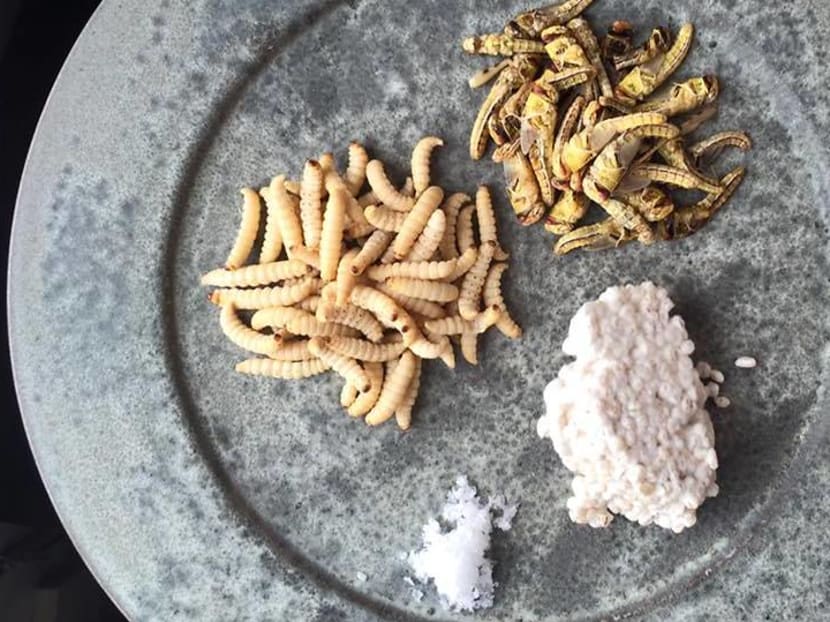
Noma'south grasshopper garum combines grasshoppers, barley koji, larvae and salt. (Photo: Facebook/Noma)
Like all the virtually dangerous habits, mine started with a youthful experiment: A funky Tunisian concoction called hrous, which comes from the edge of the Sahara.
I was led to it by that peerless gastronomic explorer Paula Wolfert and her Mediterranean Cooking, a take-you lot-in that location book that was published in 1977, a twelvemonth when toothpicks were yet usually used to kill pineapple and cheese.
Her recipe was for an earthy onion-chilli paste, churned with spices and rosebuds, which has a depth of flavor that tin elevator any soup or stew. Just what hooked me was the traditional Gabes method for making the stuff.
"In the typical southern Tunisian home," she wrote, "the melt volition slice effectually seventy pounds of fresh onions, toss them with salt and turmeric, pack them in earthen jugs, and go out them for three months to become soft and wet."
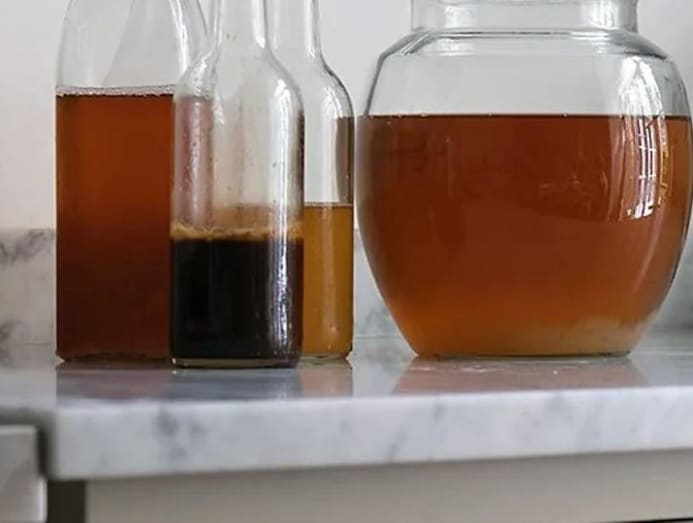
Wolfert's version of hrous was simplified and shortened for convenience. Merely the long Tunisian path proved irresistible to me. When I finally popped open the hat on the onion jar, stashed in a closet, the ripe pong was admittedly something best kept abroad from anyone you might be hoping to feed. But the finished paste was sensational.
From then on, zippo quite satisfied me like spiking food with time and microbes.
In periods of stress in particular, I would endeavor e'er more inexplicable things. When Brexit negotiations were at their peak in Brussels, I'd return from reporting on summits in the early hours and tend my crop of koji, the sweet-smelling wonder-fungus behind soy sauce and miso.
Lockdown really hastened my slide. Information technology wasn't just sourdough for me. My cupboards were used to brew butternut squash vinegar (using Smooth moonshine and an air pump commonly found in aquariums), maple syrup drinks given a tart bite by kefir water crystals and a form of miso fabricated with yellowish peas (I tin tell you how it tastes in September).
The search for an umami high eventually left me trying to recreate a Noma restaurant classic, standing over a sludgy jar full of insects – crickets and wax moth larvae – that I was going to cook at 60 degrees Celsius. For three months.
These days, I cutting my hrous with Turkish aci biber salcasi, or hot pepper paste, which counts as some other phenomenon of the long wait. My batch comes from an old family supplier in the south-eastern province of Hatay, near the edge with Syria, where I would visit my grandparents as a child.
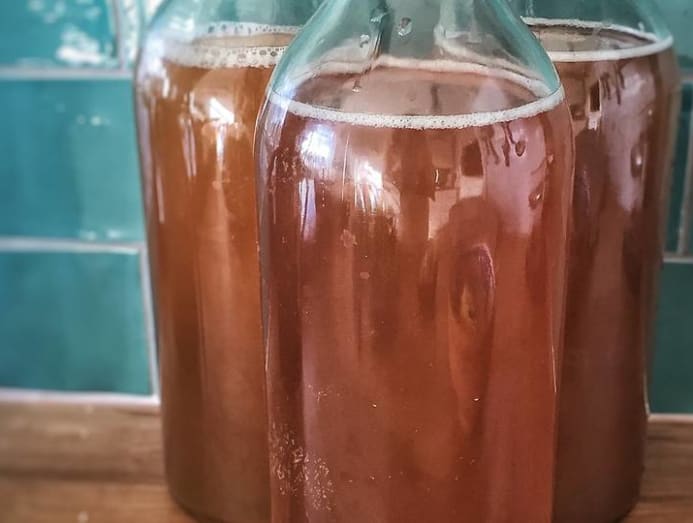
Trimmed and deseeded, the scarlet peppers are pushed through a mincer and tossed with common salt, leaving a juicy pulp that is traditionally left out to dry out in the sun. You can find apartment blocks in this region with vast paddling pools of chilli on their roofs, open up to the sunday and night air. Usually it takes about a week to achieve perfection.
This is i of the cooking staples I practise not even carp to attempt myself. I could never recreate the maturity of the flavour, a warming glow that creeps upward on the back of your mouth, unlike regular hot sauces that crackle across your lips and natural language.
Biber salcasi made the proper style is only lightly fermented but information technology still belongs to a family unit of foods – such as kimchi, kefir and kombucha – that rely on bacteria, fungus or enzymes to work magic.
Some devotees rave about their probiotic benefits. Others approach them with laboratory-mode rigour. Whole papers are written about the scientific discipline of latter-day garums, which the Romans pioneered past dumping old fish heads into big dirt pots and waiting for them to surrender a sublime juice.
My motivation is unlike. These experiments are ofttimes delicious, occasionally foul, simply always entertaining. In that location is something impossibly eccentric about entrusting microbes to brand things gustatory modality good. And when the earth shut down, I took out my frustration on some unsuspecting insects.
My path to that night place, and grasshopper garum, followed The Noma Guide To Fermentation. It is a remarkable book offer a glimpse into how this Danish eating place became known as one of the finest and most daring in the world.
On page 44 are instructions for "Building A Fermentation Chamber With A Covered Speed Rack". The assembly procedure includes sourcing a two-human foot wheely-thing (the type yous'd see holding used trays in a canteen), a space heater, humidifier, hygrometer and wraparound plastic comprehend. The extra wool blanket is optional.
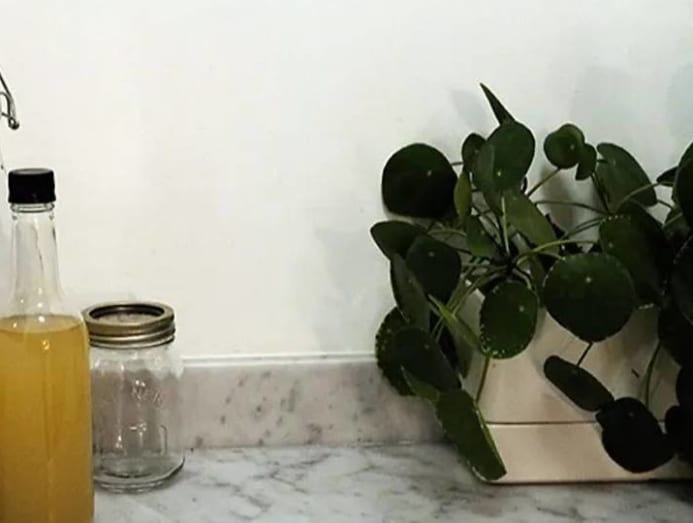
There are, thankfully, simpler ways. My always-understanding married woman bought me a Brod & Taylor proofer and slow cooker, which allowed me to cultivate koji and stew my first beef garum.
That recipe involves blending a kilogramme of mince with pearl barley koji, salt and water, earlier packing it in a jar and leaving it to melt at 60 degrees Celsius for about 12 weeks.
The strained upshot is a dark, unctuous blast of savoury flavour – something like a beefy soy sauce. Noma'southward Rene Redzepi and David Zilber use it in a fabulous pasta dressing, mixing information technology with egg yolks and Parmesan. Yet this garum gives complexity and depth to virtually any meat or vegetable dish. I've even used it every bit a low-cal savoury glaze for sweet buns.
There is cipher more highly prized at Noma than the grasshopper garum. This long, sophisticated, chocolatey potion is so versatile and so adept they had to stop it popping upwardly in too many of their dishes.
Noma suggests using alive grasshoppers besides as wax worm larvae, picayune cream-coloured wrigglers that definitely expect amend as moths. Sourcing initially looked simple simply, in the required quantities, it turned out to be a Google-defying mission (i case from my search history: "Are pet shop grasshoppers safe for homo consumption?").
I didn't relish seeing the little critters jumping around in my food processor either. My squeamish compromise was cricket flour, a high-poly peptide powder, which I am told makes a mean chocolate brownie and is catching on fast among insect eaters.
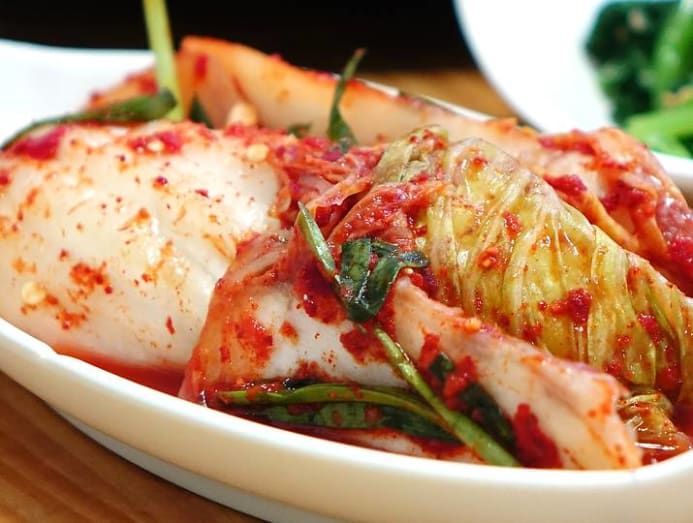
I won't go into the details of my encounter with 300 grams of wax worms, just allow me merely say that, when working in bulk, the sawdust is hard to separate from the larvae.
Believe me, the finished production was good enough to practise it all again. But even failures carry a certain satisfaction. This fermenting business needs an intrepid spirit and a sense of sense of humour. As the Noma team put it: "In that location is a sparse line between rot and fermentation."
By Alex Barker © 2022 The Fiscal Times
Recent Searches
Trending Topics
rhodeswhippyraton.blogspot.com
Source: https://cnalifestyle.channelnewsasia.com/dining/fermented-food-diy-259146

0 Response to "Adventures in DIY fermentation: From onion-chilli paste to grasshopper garum"
Post a Comment